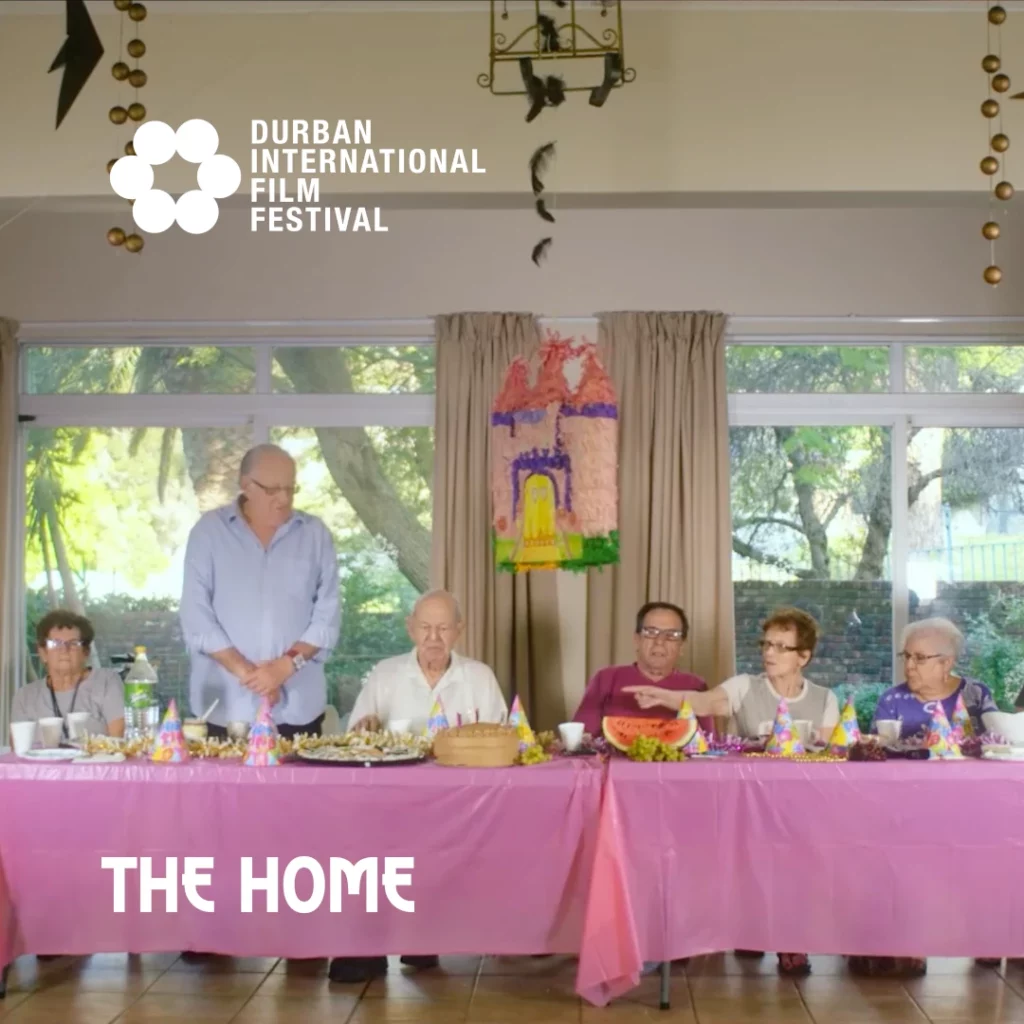By: Tshi Malatji

The Home is an old-age home in Cape Town. But this film is not as simple as that. Some of the characters refer to the Home as “just like any village” given the various communities present. There are clubs for bowls, knitting, gossip and art. One character states, “this place is like every day a Sunday”. Seemingly, the residents all have different metaphors to describe this place. The leadership functions like a regular government and the residents form a loose society. So, the home becomes a microcosm enclave.
Visually, it does just look like a plain old-age home, made specialty by its eccentric residents, accommodating staff and exorbitant activities. There is a lot of chatting, bickering and asides. The residents are more than happy to be interviewed for the documentary, offering their straightforward, witty, or insightful worldviews. Despite being talk-focused, the film also shows their activities, such as the learning of isiXhosa and the election of a new residence committee.
The film, just like life at the Home, is humorous. There are jokes about cliques, romances and the “over 90s”. There is a scene where a character sings in the shower and another where the residents are hitting a piñata. Two characters sit and gossip loudly by the pool. Life is good. The old folk are lively. They celebrate the new year with a festive party. People are playing cards. There are snacks. LED lights adorn the wall. There are fireworks in the distance.
The camera, for its parts, is a fly-on-the wall. It captures people solemnly in the chapel. It captures them painting, knitting or talking during lunchtime. There is nothing hidden from its gaze, as the elder population grows to have little-to-hide. One of the characters is a photographer who pictures everyone. The film captures them, creating cameras-within-the-camera as another quirky element. The staff are just as eccentric, as they laugh at the antics of the residents and report how they have grown on them.
Death is present in the film, certainly, but all the residents have accepted it. It is not considered taboo or painful. This unconventional and subversive view on their situation warms up the film, allowing us to focus on the wonder of their remaining lives. A staff member announces on the home’s intercom system that people should “make a brand new ending”. The film does this visual trick where it assures us that despite our anxieties, all will be okay.
Another quirk of the film is the use of music from previous eras, likely because such music resonates with the residents of the home. Therefore, the sound design is nostalgic and commemorative. This effigies the lives of the residents, whose identities are captured visually and sonically. One can even be distracted from the fact that all the workers are people of colour and all the residents are white. In fact, politics plays no role in the film at all, as the focus of lightheartedness hides the structural arrangements of their mini-society.
The film is a snapshot of the absurdity of old-age. There is a chicken running around aimlessly. The residents have both so much and nothing to do. Life is strange and so is death. But all of it can make sense within the context of a loving community, a home. Often documentaries aim to uncover stories that resist being told or struggle to be known. However, the Home is a tell-all film that has smooth ease and a sense of lightheartedness.
Catch the film at DIFF: https://ccadiff.ukzn.ac.za/diff46/the-home/
This review emanates from the Talent Press programme, an initiative of Talents Durban in collaboration with the Durban FilmMart Institute and FIPRESCI. The opinions expressed in this article are those of the author (Tshi Malatji) and cannot be considered as constituting an official position of the organisers.

